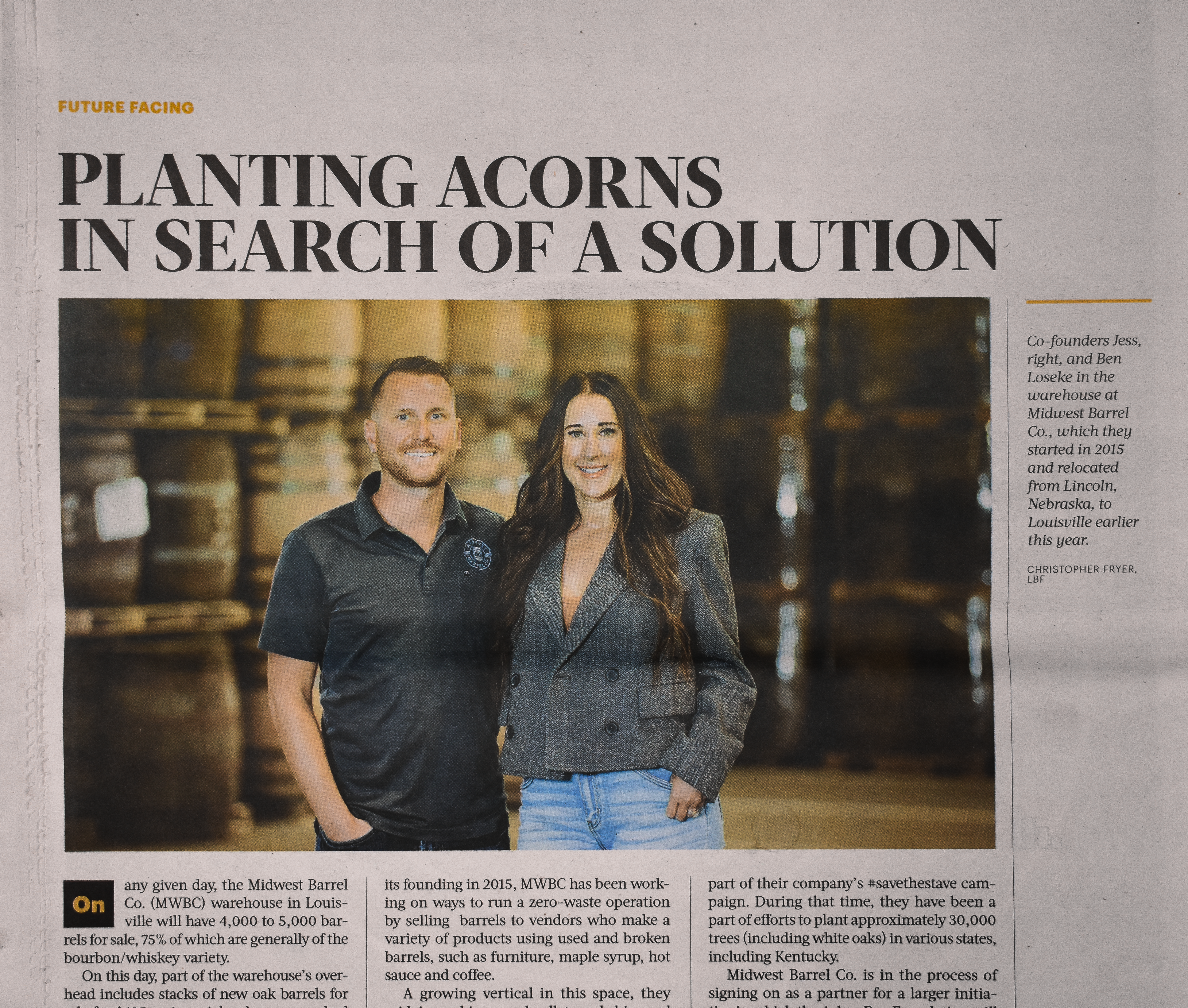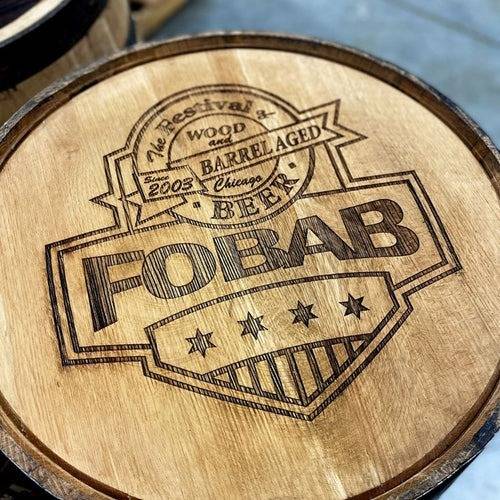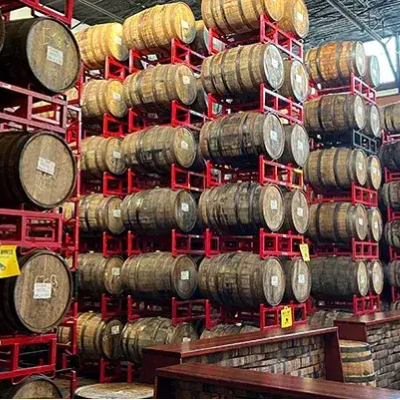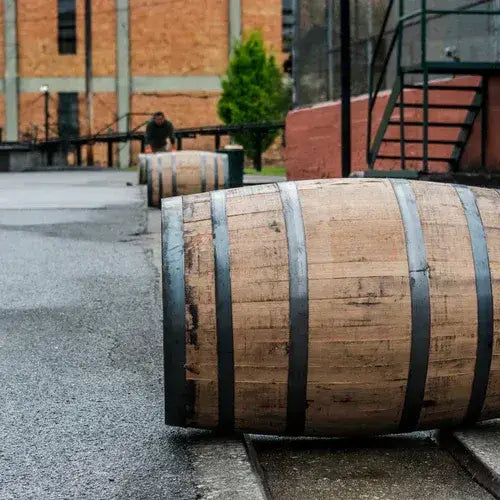Your guide to used whiskey barrels with head bungs
November 11th, 2021

Starting or scaling up a barrel program is a big step for any brewer. It makes sense, given the popularity of barrel-aged beers from high ABV stouts to big barleywines.
But getting started with this style takes its share of financial resources. It also takes up a good deal of space in a brewery. So why not dip your toes in before launching into the deep end?
How, you ask? By purchasing head bung barrels. These are often cheaper and easier to store than those with the more traditional belly (or side) bung. Plus, they age beer just as well.
In this post, we’ve gathered everything you need to know about used whiskey and bourbon barrels with head bungs and aging your brews in them.
What are bungs and bungholes?
Let’s start with some basic white oak barrel anatomy. A bung is the small plug or stopper that is placed in the bunghole, the hole that allows distillers, brewers and other beverage makers to fill and empty the contents.
Many of the full size, 53 gallon barrels we bring in have belly bungholes, also known as side bungholes. These holes are cut into a stave. However, some have bungholes that are cut into the head rather than the side.
Sometimes, you might even see a few barrels out there that have bungholes in both the side and head. That’s a little less common, but we’ve seen them come through our warehouse on occasion.
What’s the difference between head bungs and belly bungs?
Aside from the location of the bunghole, there really aren’t that many differences between head bung and belly bung barrels. Aging quality won’t be affected by the bunghole’s location, so there’s no need to worry about that. Some highly sought after whiskey distillers use head bung barrels and they’re even more common among producers in Ireland and Scotland.
Even though there are plenty of similarities, there are just a few noticeable differences that we’ll dive into a little more in depth here.

Why are barrels with head bungs cheaper?
See, when most people think of barrels, they think of bungs in the side or belly. As we’ve already mentioned above, head bungs are not uncommon, but sometimes people stick with their first preference.
That lower price point can change minds, though, especially for craft brewers who want to save money on a purchase. The lower cost makes for a more forgiving learning experience, too, if a brewer hasn’t barrel-aged much or this is their first time.
Head bung barrels get a bad rap
But still, head bung barrels have had to overcome image problems. Rum barrels are probably mostly to blame for this. While rum barrel-aged beers and other beverages are fantastic – and many commercial brewers we speak with have had a lot of success using them – aging in these casks can be more difficult.
That’s because rum barrels are often kept outside, so they’re a little more beat up. This can be especially true for the rum casks we receive, which often come from Caribbean locations, such as Jamaica, Barbados and the U.S. Virgin Islands (the source of Cruzan rum).
At the end of the day, rum barrels just need a little more care to make them ready to age beer.

quality, easy-to-use head bung barrels
It’s not fair to judge all head bung barrels based on those that aged rum. Those with head bungs that were used by distilleries here in the contiguous U.S. and other North American sources are often cared for and treated just as well as those with belly bungs.
Several prominent distilleries, including the makers of Crown Royal Whisky, Templeton Rye and Tincup Whiskey, have used head bung barrels to age their spirits. These are still quality vessels and no brewer should hesitate to use them based solely on bunghole location.
How do I store barrels with head bungs?
The other difference – and some might say advantage – that stands out with head bung barrels is that they’re best stored vertically instead of horizontally.
Leak prevention is one the primary reasons for this. A tight, secure head bung likely won’t leak if it’s laid on its side – and some craft breweries do store them horizontally – but there is more of a chance that it could happen.
But there’s another, maybe even more beneficial reason for vertical storage: It takes up less space. Brewers (or distillers) who need to make the most of available space can do a lot with vertical storage. Horizontal storage with barrel racks, while favored by quite a few in the industry, does take up more square footage, after all.

Put head bung barrels on pallets and start stacking
A barrel standing up-right takes up a lot less space than one that’s sitting on its side on a rack. But what if you’re looking at a significant quantity? They’ll still take up needed space even if they’re stored vertically.
That’s when you need to go upward.
Let’s say you’ve got a pretty decent collection of head bung barrels that are aging beer. If you want to maximize your storage space and how efficiently you use it, then your best bet is to place the barrels on pallets and then stack them. How high they are stacked ultimately depends on ceiling height and, of course, how comfortable you are with operating a forklift.
Add a belly bung
Later down the road, should you find yourself with more space and are able to store horizontally, you can always add a belly bung.
All you have to do is seal up the head bung with barrel wax, then cut a 2-inch hole into the middle of a wide enough stave. Make sure to have a standard bung (wood or silicone) that will fit the 2-inch hole on hand. After that, you’re ready to fill and age your beer, wine or cider.
Send us your questions!
Whether you have a question about head bungs, bungs or some other barrel part, our experts are always ready to deliver excellent customer services and provide you with all the resources you need to become an expert barrel-wrangler!
Get in touch or find more information in our other commercial barrel-aging blog posts.

ABOUT THE AUTHOR:
Ben Loseke
Ph.D., and Founder of Midwest Barrel Co. Barrel expert. Plant doctor. American picker. Only known allergies: spicy food and meetings.






